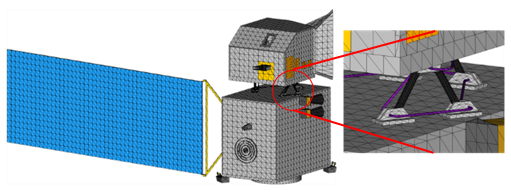Multi-Disciplinary Assessment of Design for DEMISE Techniques
| Programme: | TRP Workplan | Achieved TRL: | 3 |
| Reference: | T708-319SY | Closure: | 2017 |
| Contractor(s): | TAS (IT), ADS (UK), Deimos (UK), Hyperschall Technologie Göttingen GmbH (DE) | ||
According to ESA/ADMIN/IPOL(2014)2 all ESA LEO spacecraft disposed-of by atmospheric re-entry must demonstrate that the risk of causing casualties on ground is less than 1 in 10,000.
Complying to this requirement is challenging, since this is a new requirement and there is little applicable experience both at ESA and in industry. Design for Demise is a highly multidisciplinary approach that can bring significant benefits for future.
Objectives
- Identify the critical elements in a space system design for the on-ground casualty risk.
- Evaluate techniques for Design for Demise at system, sub-system and equipment level.
- Assess the implementation of the identified techniques and evaluate their impact at system level.
- Apply Design for Demise techniques to actual mission designs and assess the feasibility and system impact.

Achievements and status
Given the high priority of these new design techniques both for ESA and industry, 3 parallel activities were implemented, including the 3 European Large Systems Integrators. These activities allowed to have a thorough identification and analysis of the critical spacecraft elements. Different Design for Demise techniques at system and sub-system level were selected based on a careful analysis their feasibility as well as the system level impacts. These techniques effectiveness was evaluated based on state-of-the-art simulations and development roadmap provided for each one of them.

Benefits
A LEO spacecraft with onground casualty greater than 1 in 10,000 shall perform a controlled reentry, which implies and increase of the satellite mass by 10% just in propellant. Design for Demise can allow Medium and Large spacecraft carrying out an atmospheric reentry to perform an uncontrolled re-entry over 25 years with very small mass impacts.
Next steps
Several activities at equipment and system level have already been kicked off or are planned to be initiated in the near future based on the results of this activity including the development of: demisable propellant tanks, reaction wheels, magnetorquers, optical payloads and technologies for early structural break up of spacecraft during reentry.





